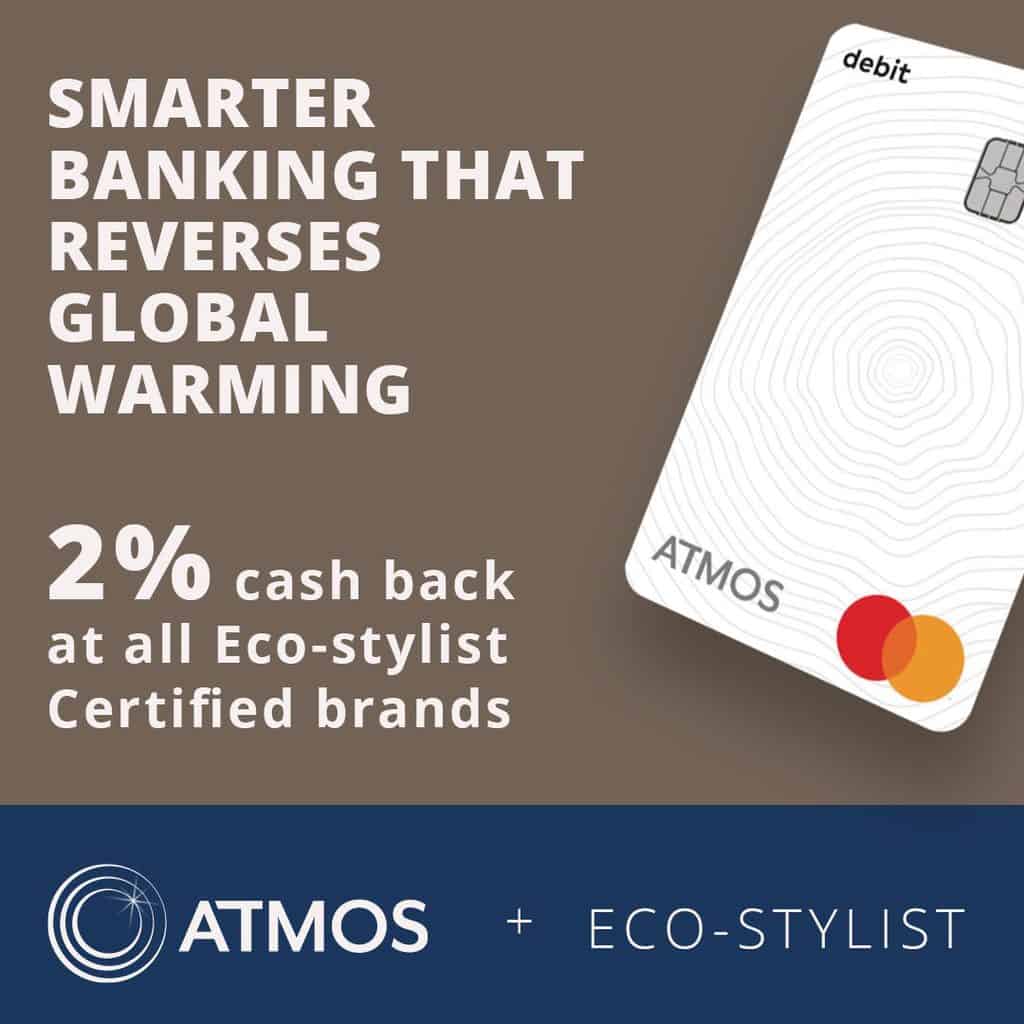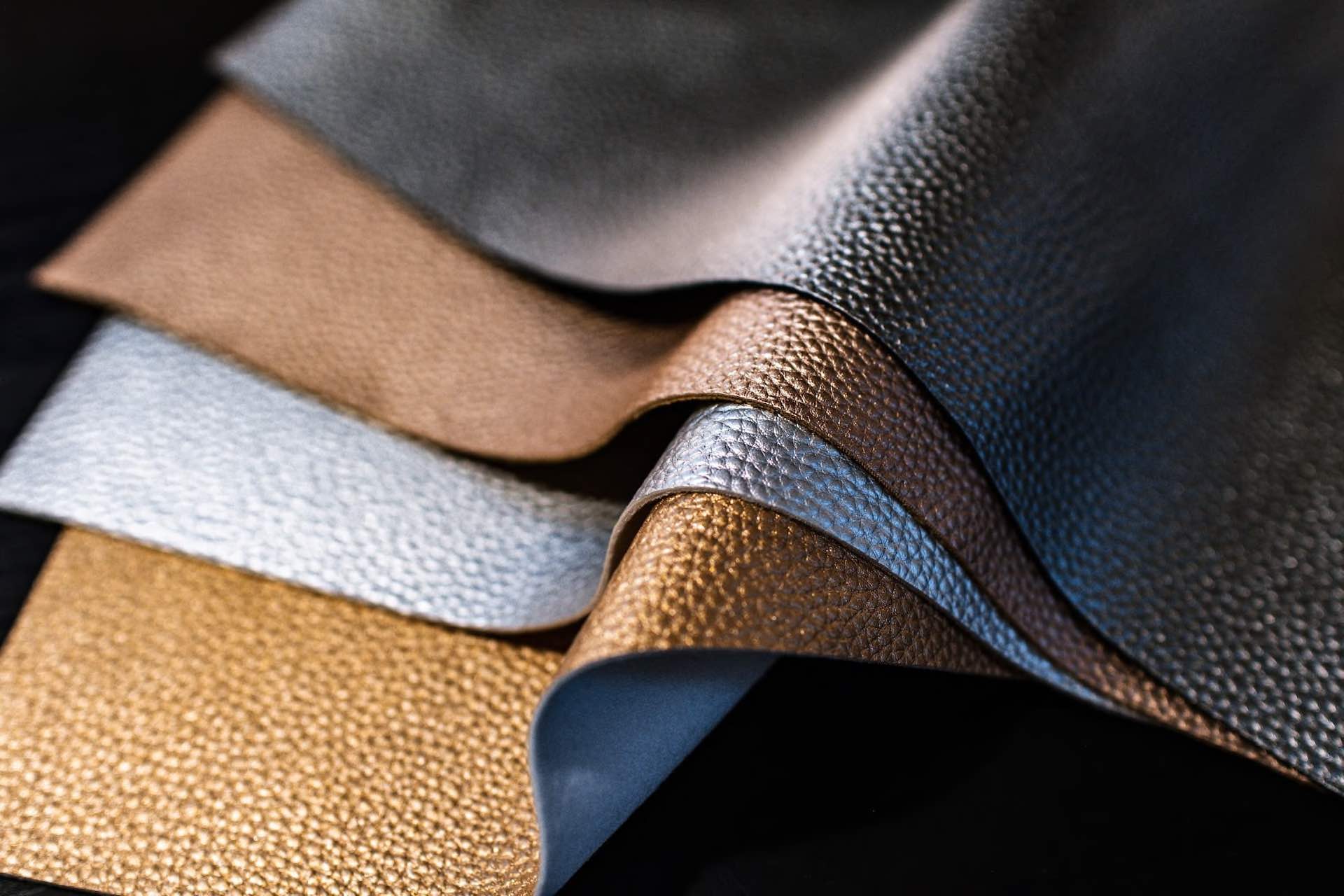
Leather sometimes gets a bad reputation, a Scarlett letter in some sustainable fashion circles. And even though its reputation is not entirely undeserved, there is more to the story. To understand how some types of leather can have a better impact, like say, regenerative leather, we first have to understand what this durable versatile material is singled out for.
The environmental claims against leather
The first charge comes from the greenhouse gas emissions produced by the factory farming industry, which contribute to global warming. A third of all human-made methane emissions come from agriculture and land use. Livestock is responsible for making 32% of that third, in the form of cattle’s farts, burps, and manure, as stated by the UNEP and the CCAC. In the United States on the other hand, “around 11% of emissions in the US come from agriculture, and a quarter of those (2.75%) are just from producing beef” according to Anna Ladd from the How to Save A Planet podcast.
The second allegation has to do with deforestation, especially in the Amazon, which is a huge carbon reserve and home to indigenous people.“Cattle pasture now occupies some 45.1 million hectares (Mha) of land deforested between 2001 and 2015, accounting for 36 percent of all tree cover loss associated with agriculture during the time period”, according to the World Resources Institute Report. This deforestation has been linked to more than 100 fashion brands, through the use of leather that came from the Amazon, by the Slow Factory and Stand Earth.
The third charge has to do with processing, of which tanning can be one of the most polluting due to chemical agents like chromium VI, which can result from the use of chromium III under the wrong circumstances. This can end up poisoning waterways and people.
Is leather a by-product of the meat industry?
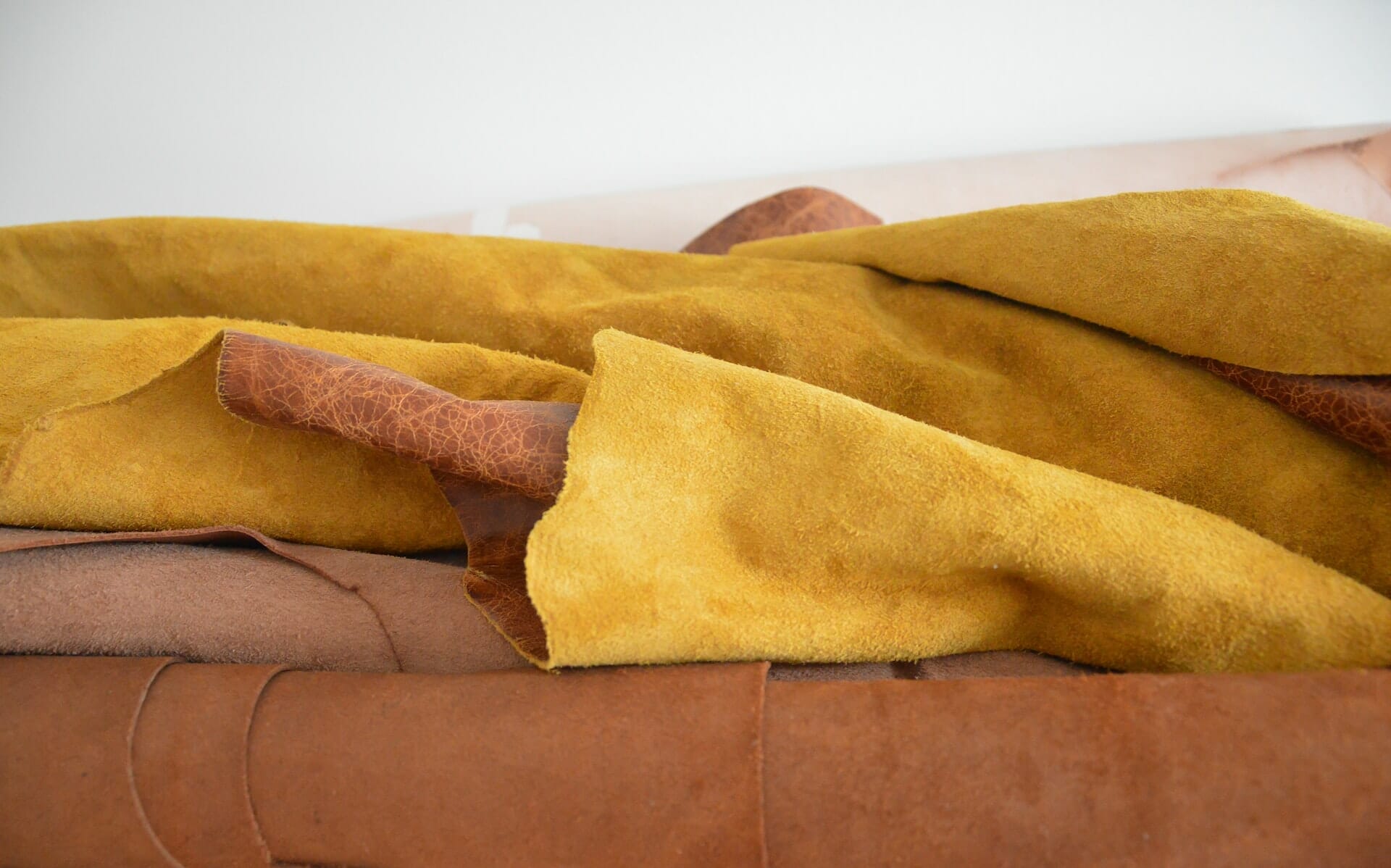
At least from an economical standpoint within the US, leather could be considered a byproduct of the beef industry. If you look at the value of a cow in the US, leather only accounts for 1%. So even though leather is sold for profit, it only accounts for a small part of the profits.
Especially in today’s circumstances where demand for beef has spiked and the one for cow leather has plummeted, leaving excess hides. This also means that of the 2% annual carbon emissions produced by the beef industry in the US, leather would be responsible for only 0.02%.
And more importantly, since we don’t yet exist in a 100% vegetarian culture, even if all demand for leather stopped the beef industries’ emissions would still exist and hides would be left to produce even more GHG in a landfill, as it is already happening in the US. So by manufacturing items with cow leather, brands are repurposing this by-product.
However, there are some people that argue that instead of a byproduct, leather is a co-product of the leather industry because it generates huge profits in and of itself, as it does in Brazil where it accounts and 1.1B USD in profits revenue for a total of $34.74 billion USD in revenue generated by the slaughterhouses. The meat stays mostly in the country, whereas 80% of the leather is exported. Even if it has a huge economic impact though, this is still only 3%.
Where this argument gets more weight is specifically to calfskin leather since veal consumption has actually dropped, the dairy industry has no use for the calf and some luxury brands have actually bought leather suppliers to ensure this commodity is still on the market.
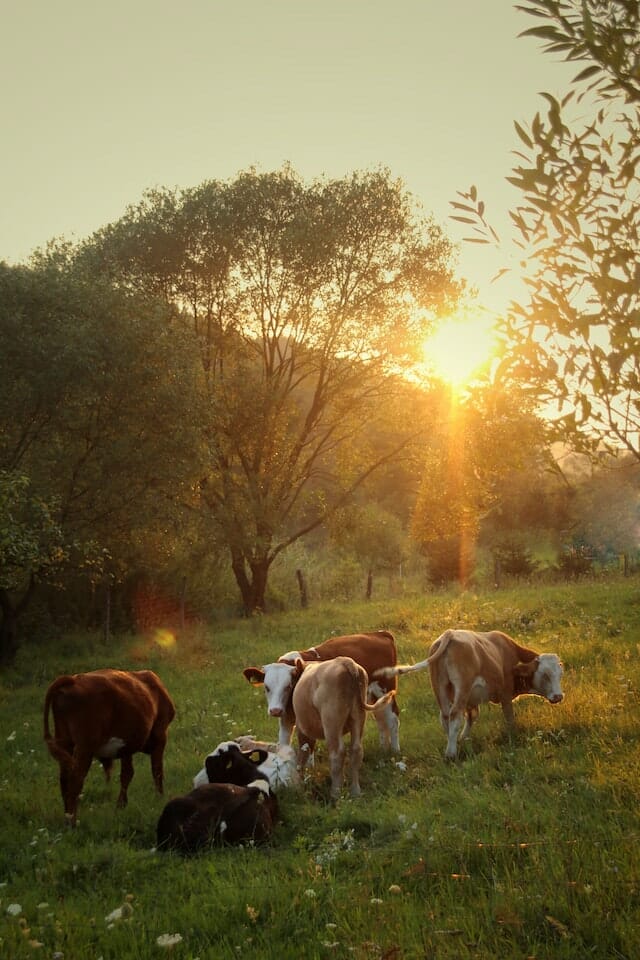
Is some leather more eco friendly?
Leather is also an incredibly durable material, when used to make quality items, it can last for years. Even more so if said pieces are made to be repaired and taken back to be resold or recycled when the wearer no longer has use for them. It is also a material that can biodegrade in 10 to 50 years, depending on how it is tanned.
However, not all leather is made equal. Knowing where and how the cattle were grazed, how the hide was tanned, and how the people involved in making the leather are treated can make a big difference.
Nonprofits and companies like the Savory Institute, One-Half Processing, Traceable, or Spoor are providing traceable leather from ranchers that use methods that counteract emissions and avoid deforestation. One of these methods is called regenerative cattle ranching, as explained by the Savory Institute:
“Ranchers and farmers who use regenerative grazing practices manage their cattle in a way that mimics the natural movement of herd animals. This grazing allows for more rest and re-growth of grasses, leading to better food for livestock and healthier soil, as these grasses pull carbon out of the atmosphere and store it in the ground. These practices also support biodiversity and make the land more productive with greater resilience to both drought and heavy rain”.
This method proves that better grazing practices can in fact produce better environmental impacts by helping the soil and plants stay healthy so they can sequester carbon and turn it into sugar by photosynthesis. In this way, regenerative leather helps combat global warming instead of contributing to it. Brands already using regenerative leather include Patagonia and Koio.
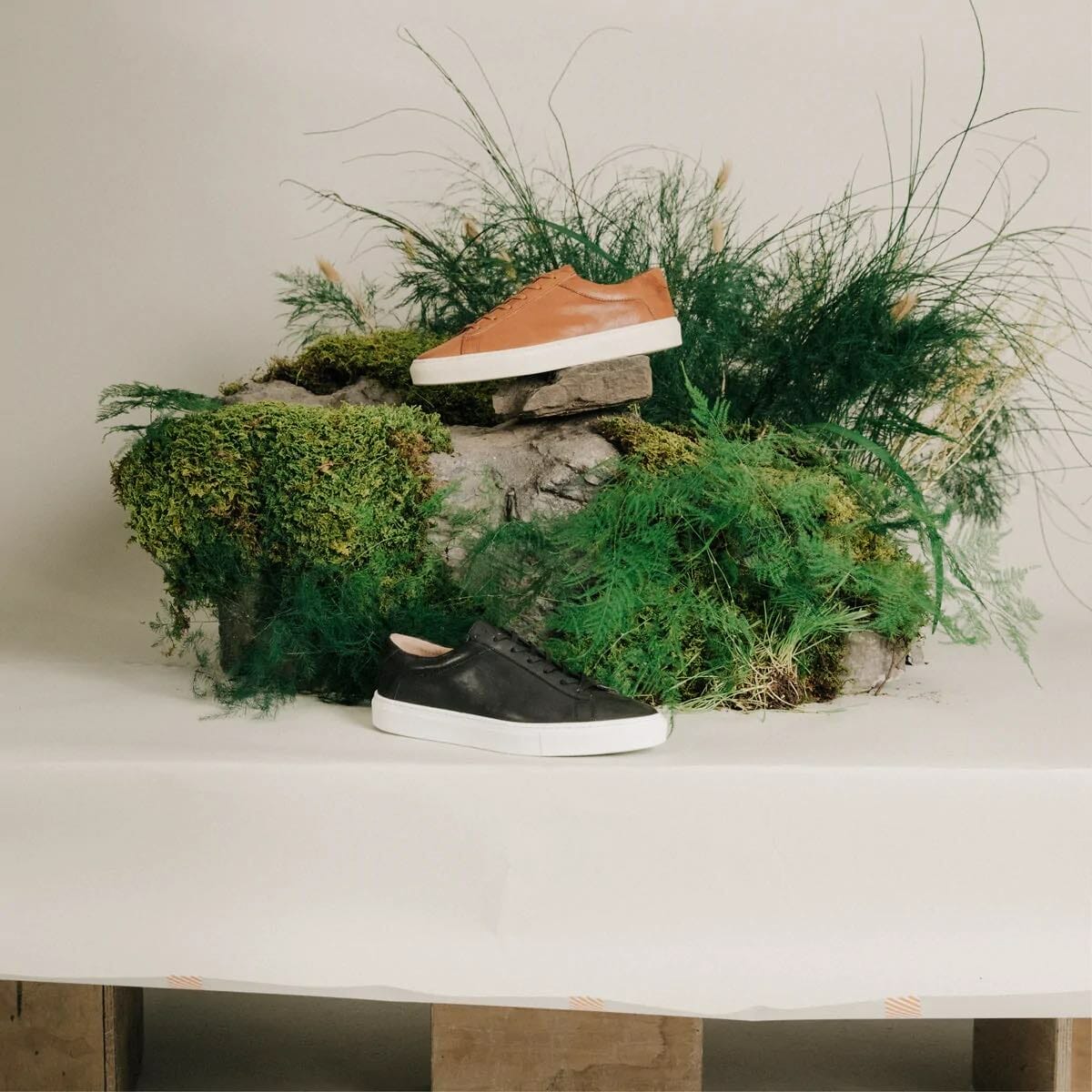
Better tanning and processing practices
There are also better ways to process the leather and certifications which ensure the tanning process is done to the highest standards. One such certification is offered by the Leather Working Group: a multi-stakeholder entity that strives to make leather more sustainable. It rates tanneries’ using a Gold, Silver, and Bronze color scheme that equates to a score given on environmental policies and procedures, energy consumption, water usage, air and noise emissions, waste management, and worker safety. Brands like Nisolo and Beckett Simonon use LWG-certified leathers.
Other responsible processing methods are vegetable tanning and DriTan. Vegetable tanning is done using natural agents like bark to process leather, thus avoiding the use of harmful chemicals. This process however can be more water-intensive and may not yield the same results. The DriTan method, on the other hand, solves the water issue by using the hide’s own moisture and reduces the need for chrome III in half.
How sustainable are vegan leather alternatives?
Sadly, most leather alternatives widely available today are made entirely from plastic (PU or PVC), which comes from the fossil fuel industry. This pleather may be vegan but it is certainly not ecological: from extraction to its refining and end of use, plastics are responsible for 3.4% of global emissions greenhouse gas emissions.
They are also polluting rivers, oceans, and terrestrial environments. Other leather alternatives made from organic waste like AppleSkin may appear great at first glance but in order to make them durable they are also coated with PU.
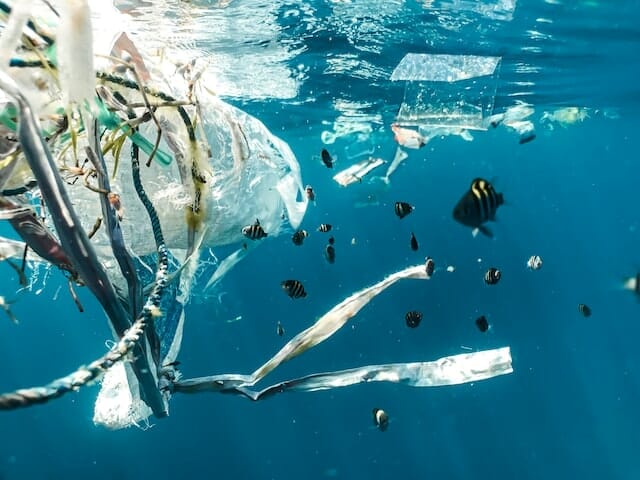
Recycled plastics or RPET alternatives, previously regarded as a great solution, also run the risk of returning to our waterways in the form of microfibers that have already been found even in maternal milk. This happens especially with items that need to be machine washed because of the friction in washing and drying machines.
When it comes to footwear, however, there is one brand that is making leather-like sneakers using recycled PET that has taken the time to design their footwear that only requires a damp cloth to be cleaned and is designed for circularity: Thousand Fell.
For plastic-free alternatives that may have better impacts, you also have to consider whether scaling them means also chopping down trees to plant the one crop they are made of; and how durable they are. Having tested cactus alternatives for footwear, for example, it does not have the same resistance to wear and tear as leather does when exposed to the ground and the elements.
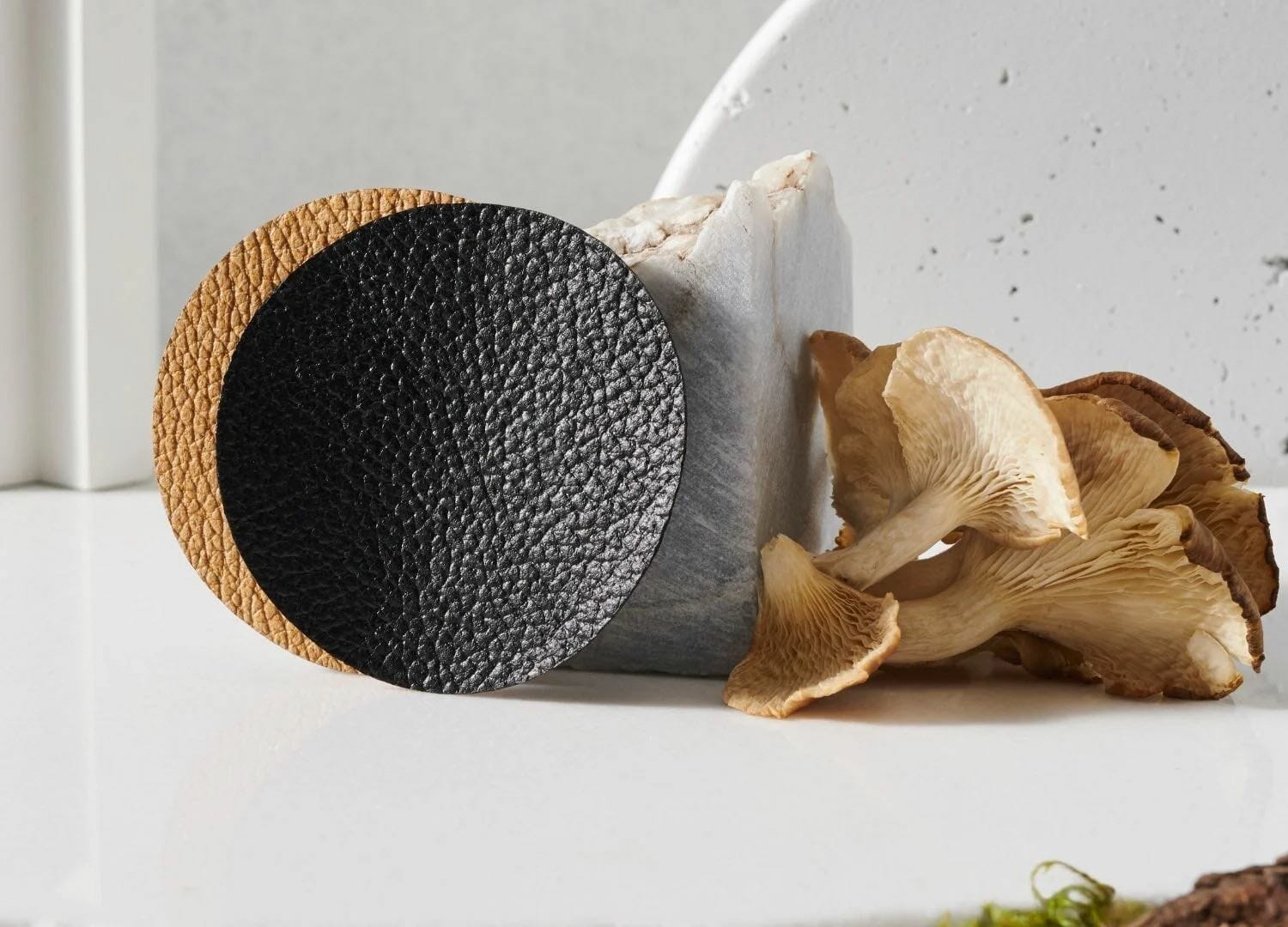
More sustainable vegan leather options
Some plastic-free materials that do show promise, however, are:
- Mylo is made from mycelium found in mushrooms, currently in a scaling state, with the investment of Adidas, Stella McCartney, Lululemon, and Kering.
- Mirum is a natural rubber-based alternative that is dyed using only natural pigments and minerals; it is backed with cotton and can be recycled into new Mirum. It can be done with FSC Certified rubber (which guarantees no deforestation) and organic cotton backing upon request. They are now opening another facility which will make it a more economically viable option.
- Slowhide is a plant-based alternative made from natural waste materials. It is made in a process similar to that of kombucha, by making a symbiotic culture of yeast and bacteria from waste from local industries like coffee or tea. It is dyed with natural materials only, like Spirulina. It is still in its funding stage.
- Vittrolabs is replicating cow-skin cells in a lab by making an environment similar to that in which the cells would reproduce on the living animal. Their pilot facility is expected to be operational next year to produce the first batch for its investing partners like Kering. Since this is still in the early stages the tanning process isn’t clear and they have not revealed the exact environmental impacts of the process.
Most of these alternatives are in their infancy or currently have a small commercial capacity, which makes it hard for smaller brands to access them because of their higher prices. While these keep developing and scaling, using leather originated from regenerative farming practices and processed in a matter that considers environmental impact might be the best option.
How can we make better choices for the planet?
Knowing this, it could seem daunting to make your next conscious purchase or know how to make an impact as a citizen and fashion lover. But it does not have to be.
The first thing to have in mind is no solution is perfect or impact-free, so it’s about going with what has a better impact, according to your values. The below brands not only offer more sustainable leather and vegan leather alternatives, but are also Eco-Stylist certified brands doing better for people and planet.
More sustainable options for leather users
Durable, repairable, and recyclable for new products, leather ensures you do not have to replace your footwear as much. In fact, I have had pairs that I have worn for more than 5 years, with help from expert cobblers and I have inherited leather purses from my grandmother that are at least 20 years old.
Some brands have achieved good tanning practices, others have been able to ensure their leather does not come from deforested land and others have been able to acquire hide from regenerative leather resources.
Leather fashion brands with better tanning and no harmful chemicals

Adelante and Beckett Simonon are two brands that offer durable leather footwear options that have better tanning methods and are also Made-to-Order. This means every shoe has an owner, even before the leather is cut.
Adelante sources its leather from a vegetable tannery in México that uses solar power and a pellet system that ensures 40 to 50 percent less water is used and hide waste is turned into collagen for the beauty industry. Beckett Simonon uses leather from a Leather Working Group Gold Certified Tannery in Italy.
Regenerative leather and deforestation free leather

Nisolo has a holistic sustainability approach. Their footwear is made from leather that is LWG certified which does not contribute to Amazon deforestation. Additionally, they offset their CO2 emissions with Ecosphere+ by investing in forest conservation in the Cordillera Azul of the Peruvian Amazon.
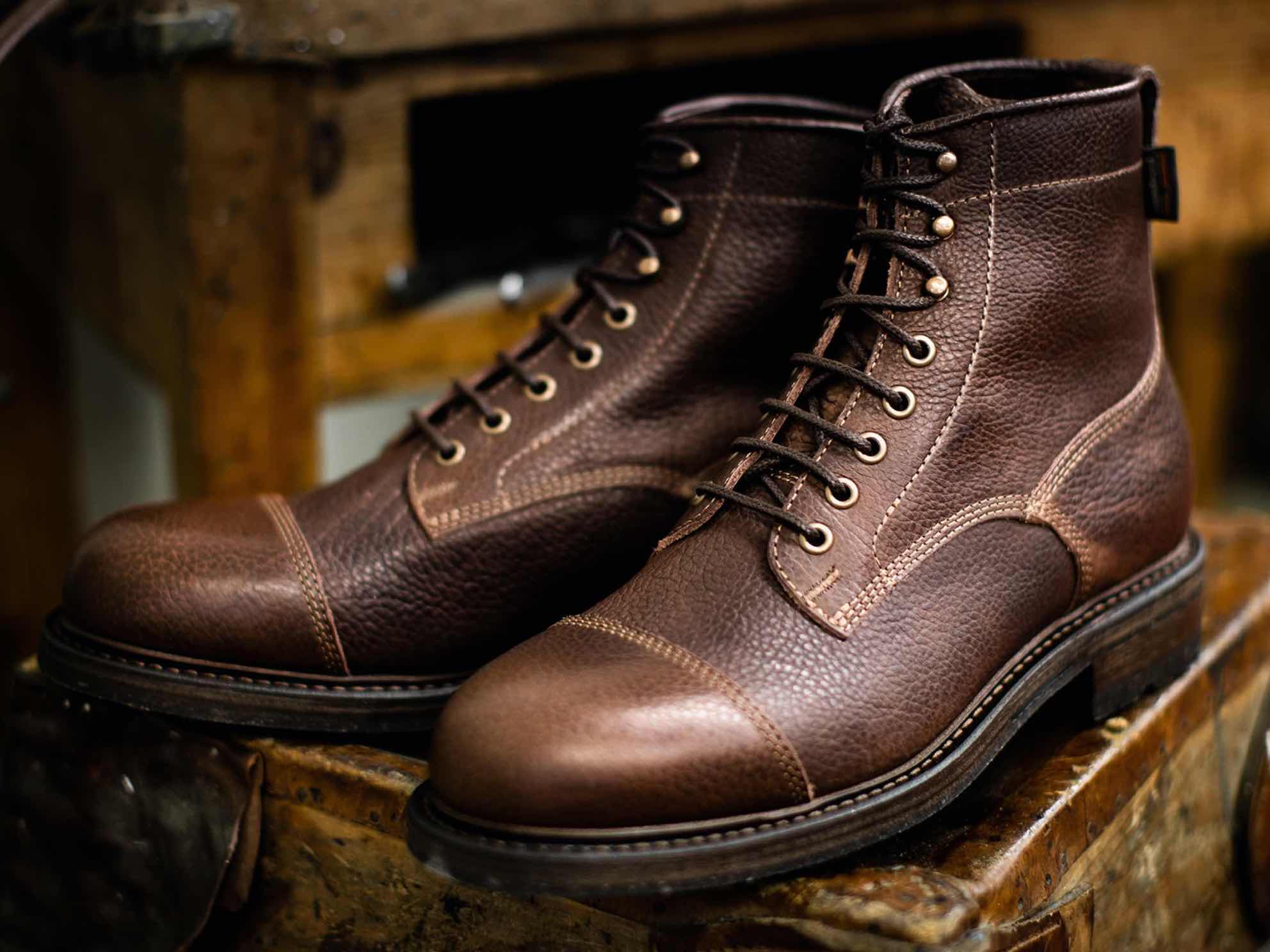
Patagonia and Koio work with regenerative leather from different sources that appeal to a variety of tastes. Patagonia offers the rugged Wilde Idea work boots made from leather that was wasting away in the process of its Patagonia Provisions Beef Jerky. Made from bison skin, the buffalo roams the plains, cropping only the tops of the soil and allowing for better carbon sequestration.

Koio offers the perfect elegant, minimal sneaker –made with the help of Traceable Leather–, from cattle that graze under regenerative circumstances in the Swiss Alps.
Ethical leather alternatives for vegan users
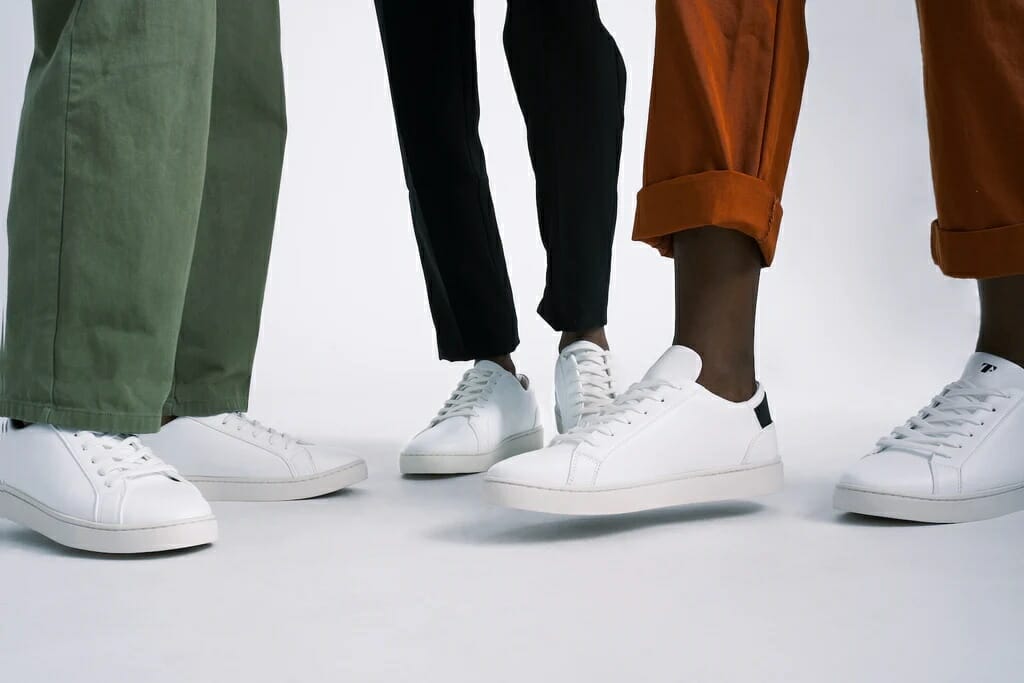
Thousand Fell is a great alternative if you are looking for leather-like white sneakers. Their recycled-PET uppers do not need microfiber shedding care, are coated with natural materials like quartz, use rubber recycled from yoga mats, and are made to be recycled at their end of life.
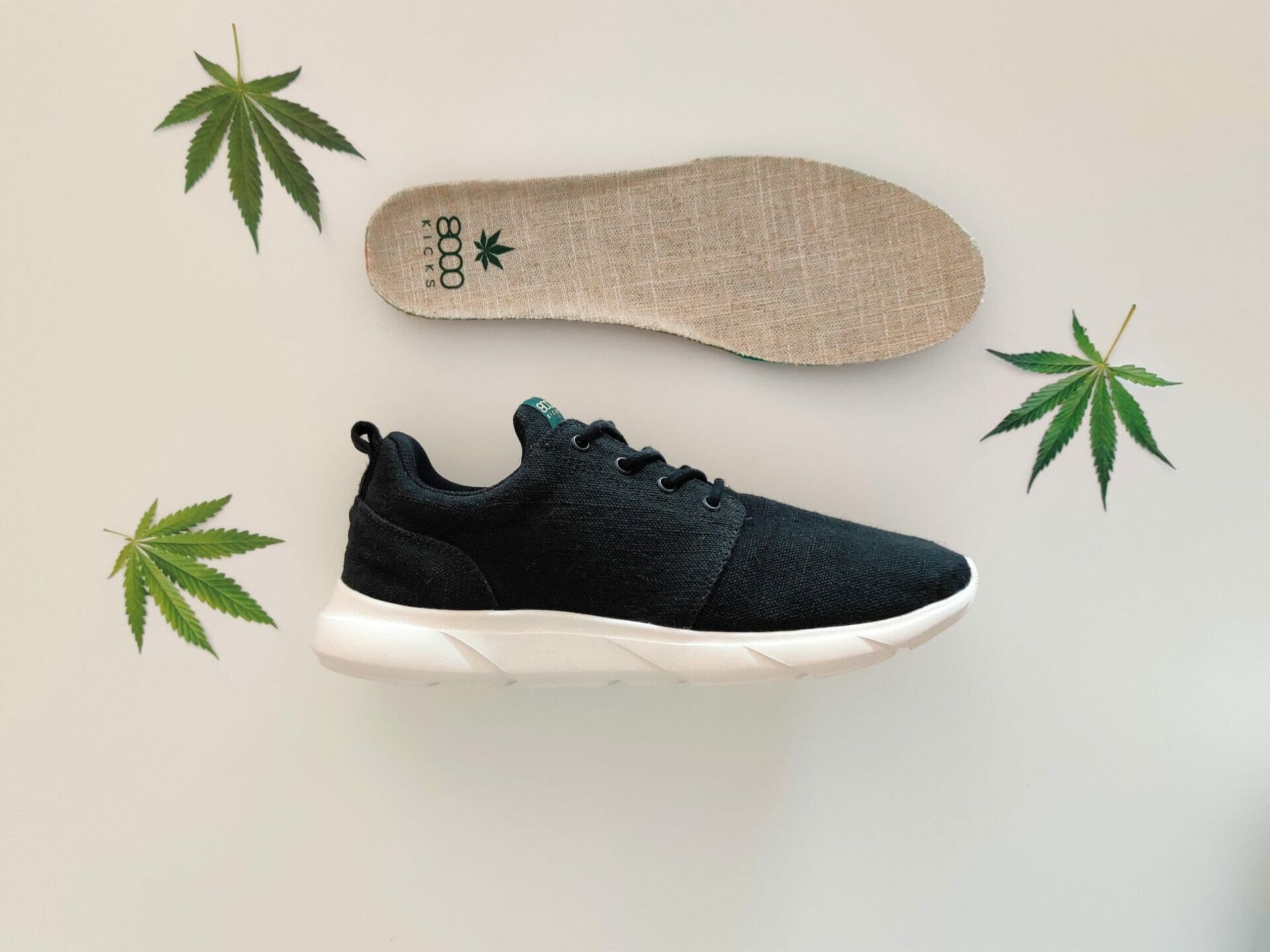
8000Kicks is another option if you like sneakers. They make theirs with hemp, coated with wax. Their soles are also vegan and climate positive, made from an algae bloom. Hemp actually requires about a third of the amount of water it takes to grow organic cotton, it is naturally pest resistant and can sequester up to 22 tons of CO2 per hectare per year, according to Defra.
For more elegant-looking sneakers Veja makes theirs from a corn-waste based material called C.W.L.

Better leather products that are not Eco-Stylist Certified
The below brands are not Eco-Stylist certified, meaning they’re not brands we recommend. Even though these brands have not yet passed our criteria, they are using some interesting, plastic-free, leather alternatives or better tanning methods that we thought was worth mentioning.
Allbirds produces more casual sneakers made from Mirum. The natural rubber leather alternative is made by Natural Fiber Welding. A plastic-free material that can be regenerated into new material.
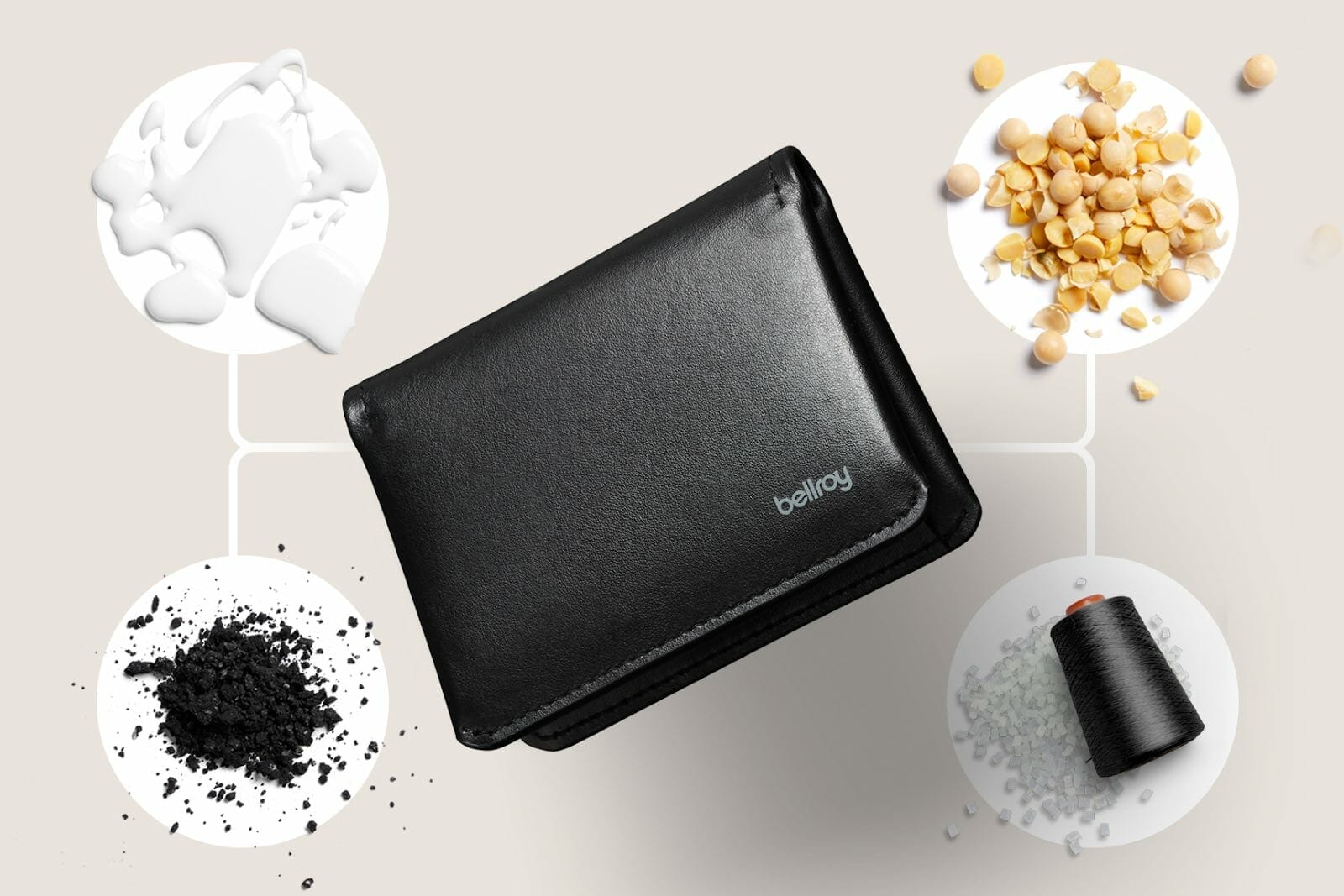
Bellroy also produces wallets and bags from Mirum, backed with organic cotton. As well as with Leather Working Group-certified leather or DriTan ECCO leather. They also founded the Animal Welfare Group which has developed profiles of 24 hide-producing countries and how reliable they are in their practices.
Adidas uses mycelium made, Mylo on its vegan Stan Smiths. With this material, Stella McCartney also makes handbags for the luxury vegan consumer.
Finally, Timberland works with the Savory Institute and Other Half Processing to bring more casual options in both boots and chunky sneakers made from regenerative leather from verified farms. It also has another line made from plastic-free recycled leather from Sustainable Composites.
Actions for citizens, not just consumers
Buying is not the only action you can take to have an impact when it comes to materials. In fact, you can stand by initiatives aiming to reduce cattle-based deforestation and produce new material alternatives without consuming a single thing.
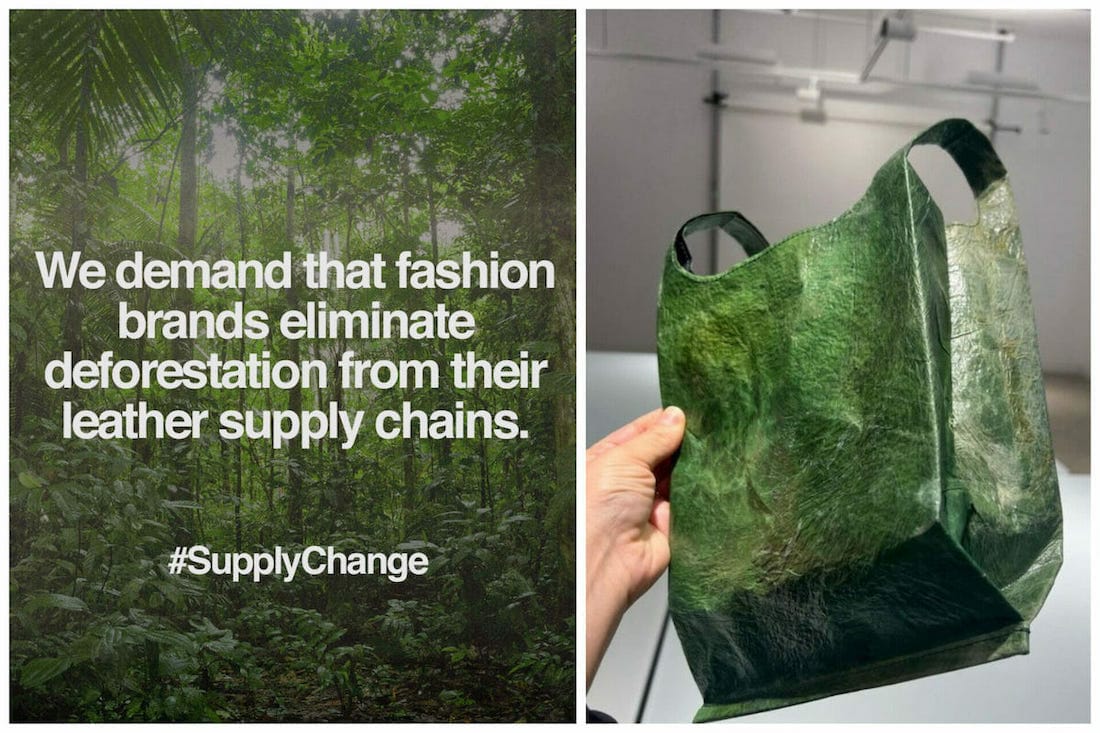
Slow Factory Institute and Stand Earth are leading the campaign against Fashion Related Amazon Deforestation, you can sign their letter here, and amplify their call with your circle. You can also donate to the Slow Factory so that they can keep working on SlowHide, their leather alternative material made from coffee and tea waste, to make it scalable.
Sustainable Fashion Resources
- Wondering about the sustainability of other fabrics? Check out our guide.
- Looking for more sustainable brands and vegan fashion brands? Check out our brand directory.
More questions? Let us know.

Adela is a Colombian storyteller, content maker, strategy consultant, & event producer, specializing in sustainable fashion, mental health, and gender issues.





